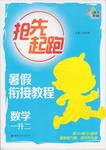题目内容
A device that stops drivers from falling asleep at the wheel is about to undergo testing at Department of Transport laboratories and could go on sale within 12 months.
The system, called Driver Alert, aims to reduce deadly road accidents by 20% - 40% that are caused by tiredness. Airline pilots can also use it to reduce the 30% of all pilot-error accidents that are related to fatigue.
Driver Alert is based on a computerized wristband (腕套). The device, worn by drivers or pilots, gives out a sound about every four minutes during a car journey. After each sound the driver must respond by squeezing the steering wheel (方向盘). A sensor in the wristband detects this pressing action and measures the time between the sound the driver’s response.
the sound the driver’s response.
Tiredness is directly related to a driver’s response time. Usually, a watchful driver would take about 400 milliseconds to respond, but once that falls to more than 500 milliseconds, it suggests that the driver is getting sleepy.
In such cases the device gives out more regular and louder sounds, showing that the driver should open a window or stop for a rest. If the driver’s response continues to slow down, the sounds become more frequent until a nonstop alarm warns that the driver must stop as soon as possible.
The device has been delivered to the department’s laboratories for testing. If these tests, scheduled for six months’ time, are successful, the makers will bring the product to market within about a year.
1.According to the text, Driver Alert ______.
A. aims to reduce tiredness-related accidents
B. has gone through testing at laboratories
C. aims to prevent drivers form sleeping
D. has been on sale for 12 months
2.How should a driver respond to the sounds from Driver Alert?
A. By sounding a warning.
B. By touching the wristband.
C. By checking the driving time.
D. By pressing the steering wheel.
3.We can learn form the text that the driver needs to stop for a break when his response time is ____.
A. about 400 milliseconds B. below 500 milliseconds
C. over 500 milliseconds D. about 4 minutes
4.When the driver gets sleepy while driving, Driver Alert ______.
A. moves more regularly
B. stops working properly
C. opens the window for the driver
D. sounds more frequently and loudly
1.A
2.D
3.C
4.D
【解析】
试题分析: 在本文中作者介绍了一种新发明的、叫driver Alert的汽车装置,这种装置每四分钟发出一次声音,司机要通过按压方向盘来对此回应,以表明司机没有困倦,如果反应超过标准的时间,则说明司机疲劳驾驶,需要停车休息。这种装置目前正处于试验阶段,据说能减少20%--40%因疲劳而造成的意外。
1.A细节题。根据文章第二段1,2行The system, called Driver Alert, aims to reduce deadly road accidents by 20% - 40% that are caused by tiredness.可知这项装置旨在于减少由于疲惫而导致的事故。故A正确。
2.D细节理解题。根据文章第三段After each sound the driver must respond by squeezing the steering wheel(方向盘).可知司机听到Driver Alert所发出的声音时要按压方向盘,答案选D。
3.C细节理解题。根据文章第四段a watchful driver would take about 400 milliseconds to respond, but once that falls to more than 500 milliseconds, it suggests that the driver is getting sleepy.可知司机需要休息的反应时间为500毫秒以上,答案选C。
4.D细节理解题。从文章四、五段内容可知如果司机对Driver Alert 的声音反应不及时,就表明司机困倦了,在这种情况下这种装置就会发生均匀的、很大的声音以提醒司机,(In such cases the device gives out more regular and louder sounds), 故D选项内容正确。
考点:社会科学类阅读。

 南大教辅抢先起跑暑假衔接教程南京大学出版社系列答案
南大教辅抢先起跑暑假衔接教程南京大学出版社系列答案 h easier than English.
h easier than English. bject as
bject as